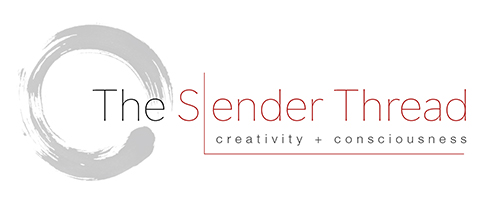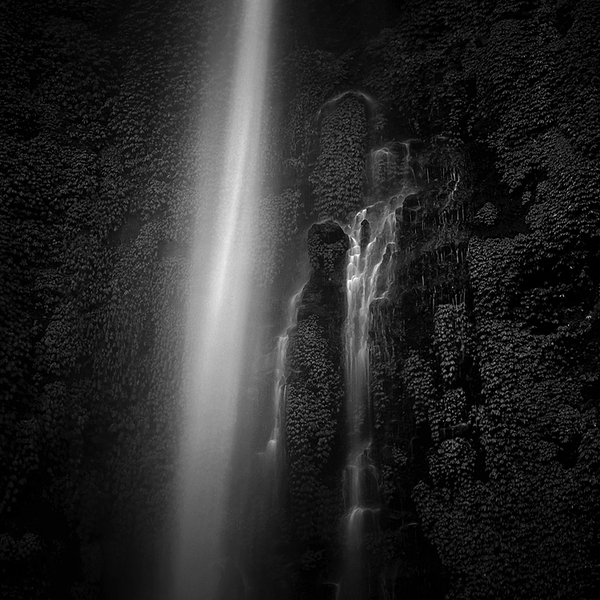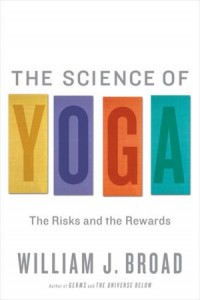God is the Friend of Silence
“Nature does indeed give something to us, and that we in turn return something — something profound. You see I can’t really explain ‘silence’. All I can do is return to it, be open to this possibility. To be in the ‘presence of silence’ is to understand it.” —Nicholas HlobeczyWhat is silence? Can we find an inner silence, a still point amidst the turning of the mind, the sheer force of the emotions, and the unrelenting pace of modernity. Entering the field of silence is paradoxical; it takes place within our lives, without turning away from the currents of outer activity. Our inner awareness needs to be strong enough to embrace what we find in our lives. And we cannot do it alone. We need help from the silent forces that arise from deep within or from above, however you understand it.
Pope Paul VI died in 1978, long before electronic media overwhelmed our awareness with the noise of the self-infatuated, post-modern din of contemporary advertising, social media, and consumer fantasy. In a prescient fashion, he wrote: “Commotion, din, feverish activity, outward appearance and the crowd all threaten man’s inner awareness. (And so because of this) he lacks silence with its genuine voice speaking in the depths of his being: he lacks order, he lacks prayer, he lacks peace, he lacks himself.”
At its roots, yoga cultivates contemplation. It is a form of prayer and devotion. So is art—and indeed so is sexuality at its deepest level. Have we distorted the true meaning of these activities, which are designed to move us beyond ourselves, to transcend our egoistic selves and transform our base metals into the gold of spiritual awakening?
Yoga, creativity, and sex all require that we open to something higher or other than ourselves. They ask for a vision that penetrates deep into ourselves—not the selves we want to be—towards uncovering the essence of who we really are. As our vision expands inward it also expands outward. And, like creativity and intimate relationships, it requires a dual approach of both commitment and surrender. We commit to our practice, our craft, and our relationships—making efforts to stay steady and quiet in the midst of turbulence.
Yoga and other contemplative practices involve the cultivation of an unwavering focus—one that borders on the austere, and that can only come through some form of inner attention and stillness. Some practices involve strict visual focal points, the progressive counting of breaths, or the repeated recitation of sacred words. We are exacting in our inner and outer alignment. It might seem contradictory that such strident attention to detail contributes to the awakening of insight. However, our effort must be met with a willingness to surrender in order to have a whole experience.
On one hand, we are actively involved in the physical and mental rigor of practice, and on the other hand we remain open to and aware of the feelings and sensations that arise. We witness ourselves through the silence of the mind that patanjali suggests in the second sutra. We seek to find the right relationship of forces and energies within ourselves; that the lower serves the higher. In other words, the efforts towards focus and the rigor of the rational mind cultivates a relationship with our deeper mind and intuitive voices.
Entering the field of silence is integral to our creative selves, to our interactions with the world and others, and to our own inner evolution. We must leave space for learning and for the appearance of our natural wisdom. It comes from the intuitive mind, not the merely rational brain. Einstein writes: “The Intuitive mind is a sacred gift and the rational mind is a faithful servant. We have created a society that honors the servant and has forgotten the gift.” Can yoga and meditation help us reclaim this gift?
When the mind becomes still, new layers of insight emerge through the depth consciousness. In works of art or from life itself, symbols communicate to the deeper mind, metaphors awaken feeling, stirring memories and longings from deep within. The inner meaning of what is in front of us speaks to our unconscious. We hear the voice of intuition, breaking into conscious awareness with spontaneous insights and new discoveries. This prompts us to ask: how does intuition regard this person, artwork, or event? What intuitive insights are lurking behind our ordinary consciousness? The field of silence beckons, leading us toward deeper understanding and fresh realizations.
Deep insights can grow from this active stillness, a period of relaxation during or apart from the work at hand. Einstein’s discovery of the theory of relativity is legendary. He had been deeply engaged in his work, feeling on the verge of a breakthrough for some time. Finally, as he put the work aside and went to bed, what was to become the theory of relativity suddenly appeared as an image in his mind—seemingly from nowhere. He needed to let go, be still, for the image to reveal itself. And poet Marie Rainer Rilke’s later works intruded unexpectedly into his awareness as he walked along the grounds of a castle composing a business letter. The lines of verse sharply entered his mind and he obediently wrote them down over a several month period. Through stillness, epiphanies may break forth between the cracks of the conscious mind. Retreating from the work, we allow the necessary gestation to proceed. A child grows within the womb organically, nourished by the mother until the inevitable birth. It cannot be hastened or forced.
“We need to find God, and he cannot be found in noise and restlessness. God is the friend of silence. See how nature—trees, flowers, grass—grows in silence; see the stars, the moon and the sun, how they move in silence… We need silence to be able to touch souls”
—Mother Teresa
***
In our collaboration with teaching, yoga, and creative work, we have discovered time and again much experiential evidence that contemplative disciplines such as meditation and yoga can stimulate and help awaken the creative impulse in the individual. And in no small way. The fountain of creativity flows freely in a proportional and direct relationship to the “stilling of the fluctuations of the mind” (Yoga Sutra 1:2). To the degree that we can find inner silence and peace of mind becomes a measure of our ability to contact the inner fire of creativity and the often-natural, sometimes-crazy wisdom that derives from the deeper parts of our nature. Now we are finding scientific studies that serve to support our claim.
Contemporary brain science offers external evidence that helps to support our inner experience and enlarges the question, posing findings from which we can learn a great deal about the nature of creativity.
William Broad, New York Times reporter, writes in his new book, The Science of Yoga: “Life holds few mysteries greater than those concerning the wellsprings of creativity. ‘Before the problem of the creative artist,’ Freud remarked, ‘analysis must lay down its arms.’ … A fair body of evidence…has emerged over the decades to suggest that yoga can play a role in stirring the wellsprings.” The last and closing chapter of the book is titled,Muse, and opens the door to what can only be seen as the scientific seeds of a direct, causal linkage between creativity and meditation and yoga.
We highly recommend reading this excellent book. A few key insights from the chapter are summarized here.
• Artists and musicians such as Leopold Stokowski, Greta Garbo, Sting, and violin master Yehudi Menuhin found deep refreshment, inner calm and greater access to inner creative resources through meditation and yoga. Menuhin inscribed on a gift to yoga master Iyengar: “To my best violin teacher.” And Stings claims: “I don’t think you write songs. They come through you,” And “Yoga is just a different route to the same process.”
• Broad writes: “Over the ages, many artists have looked to quiet for insight, exhibiting what Emily Dickinson called an ‘appetite for silence.’ The quietude lets them see things differently.” Broad relates several scientific studies that reveal how yoga and meditation can access the unconscious and open more deeply to feeling, memory and deeper forms of thought. Relaxed concentration and enhanced skills grew from the calming routines of meditation and yoga.
• Contemporary neuroscience can now map the brain, uncovering fairly indisputable evidence that logical and rational thought arises from the left side of the brain, while creativity, intuition, wholistc and spatial understanding, and the resonances of beauty are activated by the right side of the brain. Preliminary scientific studies reveal what we had intuited; that yoga and meditation definitely stimulate the workings of the right side of the brain with an increase of activity in the right thalamus.
• The marriage of eros with the creative impulse is a well known phenomenon, with many artists citing a strong link between artistic passion and sexual excitement. We have argued that creativity and sexuality arise from the same or very similar source, only the destinations are different. Broad relates preliminary evidence from the scientific community that validates these claims, indicating a strong link between meditation and yoga and artistic passion and its profoundly sexual undercurrents. Gopi Krishna taught that the internal energies awakened by yoga and meditation were likened to a “mystic fire’ with the capabilities of transforming individuals into “ a virtuosos of a high order, with extraordinary power of expression, both in verse and prose, or extraordinary artistic talents.”
It is gratifying to see a book like The Science of Yoga which relates hard scientific evidence to our anecdotal and experiential discoveries of the profound relationship between meditation and art, creativity and yoga. Nearly half a century ago, photographer Minor White taught meditative awareness while working creatively, through making images and through looking at and responding to works of art. At several week-long workshops that I attended, Minor’s teaching was supplemented and augmented with guided exercises from a movement instructor who employed simple physical exercises—many of them yoga poses—to assist in the awakening of creativity and awareness. It felt right and true. Now, evidence exists to highlight the benefits of this form of shared exploration.
In several posts on this blog, we have outlined our own experiences in working with students in creativity and yoga classes, notably Entering the Body, The Yoga of Creativityand The Artist and the Yogini. Additionally, we have published an article of our findings,The Alchemical Fire of Yoga and Art in the current Spring 2012 issue of Parabola magazine. Check it out.



3 Comments
Comments are closed.